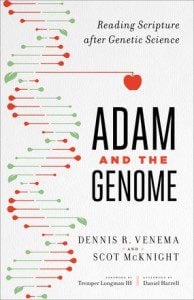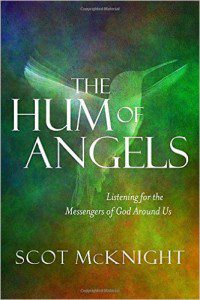Chicago!
A new blog for you to add to your regular reading, and it has a great theme and title: Slow Church. Speaking of new blogs, Pete Enns has migrated his blog over to Patheos.
And another new important blog at Patheos, by Christian sociologists.
Harvey Turner, on numbers mattering for churches: “I think you get the picture. I could probably add another dozen passages in the book of Acts that tell us explicitly that numbers matter. Having said that, I don’t think we should equate spiritual health with numbers and I don’t think we should get our identity from the sizes of our churches. However, as I read the book of Acts, I see the constant pattern of gospel proclamation and then gospel advancement. I am aware there are men in the Bible like Isaiah and Jeremiah who were called to what we might call “fruitless ministry.” And there are men who at the last day who will be applauded for leading 10 people to Jesus in a hard place and not 10,000.”
How would you teach theology if you did? How would you organize it? Here’s one proposal. And this proposal on theology leads to one of my favorite theologians talking about narrative theology.
Just because you’re a Christian doesn’t mean I’m going to vote for you. And just because you’re mainline doesn’t mean you don’t know who Rob Bell is.
Richard Beck compares “evangelicalism” with the Churches of Christ. (By the way, those four points aren’t mine; they are Bebbington’s famous quadrilateral.)
Speaking of the Churches of Christ — can you believe this story about Mike Cope? #1 coffee in the world, Mike, is Chicago’s Intelligentsia. Are you drinking drip or espresso shots?
 Speaking of numbers, George Sarris got some numbers together about the Bible: “To get an idea of how significant the Bible really is, it’s helpful to know that the world’s library catalogs list a total of about 40 million distinct book titles, with about 900,000 new books being published each year in a total of 360 different languages. That is a lot of books in a lot of languages. However, according to Wycliffe Bible Translators, the complete Bible has been translated into 457 languages; the complete New Testament into 1,211 languages; and, at least one complete book of the Bible (usually the Gospel of Mark) into an additional 897 languages – bringing the total number of languages having at least one book of the Bible to 2,565! But, not only has the Bible been translated into far more languages than any other book, it has also been distributed in far greater numbers than any other book. Discovering exactly how many copies of the Bible have been distributed is impossible because Bibles have been produced by so many different and unrelated publishers, and many Bibles are given away rather than sold. However, estimates of total distribution for all Bibles worldwide range from about 6 billion to 7.5 billion. Most people know that almost every hotel and motel room in America has a copy of the Bible placed there by The Gideon’s. That organization alone has actually placed or distributed 1.6 billion Bibles and New Testaments worldwide since its founding in 1908, including 79.8 million copies last year.
Speaking of numbers, George Sarris got some numbers together about the Bible: “To get an idea of how significant the Bible really is, it’s helpful to know that the world’s library catalogs list a total of about 40 million distinct book titles, with about 900,000 new books being published each year in a total of 360 different languages. That is a lot of books in a lot of languages. However, according to Wycliffe Bible Translators, the complete Bible has been translated into 457 languages; the complete New Testament into 1,211 languages; and, at least one complete book of the Bible (usually the Gospel of Mark) into an additional 897 languages – bringing the total number of languages having at least one book of the Bible to 2,565! But, not only has the Bible been translated into far more languages than any other book, it has also been distributed in far greater numbers than any other book. Discovering exactly how many copies of the Bible have been distributed is impossible because Bibles have been produced by so many different and unrelated publishers, and many Bibles are given away rather than sold. However, estimates of total distribution for all Bibles worldwide range from about 6 billion to 7.5 billion. Most people know that almost every hotel and motel room in America has a copy of the Bible placed there by The Gideon’s. That organization alone has actually placed or distributed 1.6 billion Bibles and New Testaments worldwide since its founding in 1908, including 79.8 million copies last year.
To put those numbers in perspective – the number 1 best-selling regular book of all time is A Tale of Two Cities by Charles Dickens. Since its publication in 1859, it has sold approximately 200 million copies. The Lord of the Rings by J.R.R. Tolkien ranks second at about 150 million copies, with The Hobbit next at approximately 100 million. Other all-time best-selling books include The Lion, The witch and the Wardrobe by C.S. Lewis at about 85 million, The DaVinci Code by Dan Brown at 80 million, and Anne of Green Gables by Lucy Maud Montgomery at 50 million. The Purpose Driven Life by Rick Warren has sold about 30 million copies.”
I don’t know Fr Rob, I find skunks a nuisance — grubbing around in our yard and digging little holes everywhere. They are nature’s aerators.
Historic female mathematicians.
Meanderings in the News
 Best thing I read all week on the internet. By David Margolick: “On her first morning of school, September 4 1957, Elizabeth Eckford’s primary concern was looking nice. Her mother had done her hair the night before; an elaborate two-hour ritual, with a hot iron and a hotter stove, of straightening and curling. Then there were her clothes. People in black Little Rock knew that the Eckford girls were expert seamstresses; practically everything they wore they made themselves, and not from the basic patterns of McCall’s but from the more complicated ones in Vogue. It was a practice borne of tradition, pride, and necessity: homemade was cheaper, and it spared black children the humiliation of having to ask to try things on in the segregated department stores downtown.
Best thing I read all week on the internet. By David Margolick: “On her first morning of school, September 4 1957, Elizabeth Eckford’s primary concern was looking nice. Her mother had done her hair the night before; an elaborate two-hour ritual, with a hot iron and a hotter stove, of straightening and curling. Then there were her clothes. People in black Little Rock knew that the Eckford girls were expert seamstresses; practically everything they wore they made themselves, and not from the basic patterns of McCall’s but from the more complicated ones in Vogue. It was a practice borne of tradition, pride, and necessity: homemade was cheaper, and it spared black children the humiliation of having to ask to try things on in the segregated department stores downtown.
In the fall of 1957, Elizabeth was among the nine black students who had enlisted, then been selected, to enter Little Rock Central High School.”
Patricia Leigh Brown: “New Roots, with 85 growers from 12 countries, is one of more than 50 community farms dedicated to refugee agriculture, an entrepreneurial movement spreading across the country. American agriculture has historically been forged by newcomers, like the Scandinavians who helped settle the Great Plains; today’s growers are more likely to be rural subsistence farmers from Africa and Asia, resettled in and around cities from New York, Burlington, Vt., and Lowell, Mass., to Minneapolis, Phoenix and San Diego.”
iO9, by Tim Barribeau: “Lungfish are a peculiar type of fish that can survive for an extended period on land. Using their pectoral fins to propel themselves, they can gulp air and live for some time out of the water — and they’re the sole surviving creature that could explain how we evolved to leave the oceans. The ancestors of lungfish are what eventually evolved into tetrapods, the four-limbed creatures that made the transition into full time landlife, and then became the basis of all land animals. The majority of the analysis on this transition was previously carried out on fossils, but the big problem there is that all their soft tissue has gone, leaving us missing a key part of to how the load bearing muscles of legs evolved to support the relocation onto land.”
I like to read that almost always depressing Hemingway, but he draws me in, and this Nobel award speech is a good example. You can read it or hear him … I did both.
Theft, but of a bridge? “NEW CASTLE, Pa. (AP) – A 50-foot-long bridge in western Pennsylvania has been stolen, and its owners say they’re baffled by the crime and have no idea who took it. New Castle Development spokesman Gary Bruce said Friday that he “couldn’t believe it when they told me it was gone.” A state police report says the 20-foot-wide span in North Beaver Township went missing between Sept. 27 and Wednesday. The bridge was made out of corrugated steel and valued at about $100,000. Thieves used a blowtorch to cut it apart, presumably to sell it for scrap metal.”
The Dead Sea is not as dead as they thought.
Joe Posnanski: “And none of it fazes me, certainly not anymore. Twitter. Hulu. Instapaper. It’s all just part of living in today’s world. I just turned on my television, punched a few buttons, and watched a little bit of Reality Bites. Just now. For free. This is how it goes. I went to my computer, clicked on Spotify, and listened to a bit of the new Jack’s Mannequin album. This is how it goes. I just clicked on the SI Vault and printed out every single story we’ve ever written about Joe Paterno. This is how it goes. Who even thinks about it? There is only one device in my life that constantly amazes me, every single day, nonstop … only one thing that, for me anyway, stays surprising and modern and, sure, I’ll say it, miraculous. That, of course, is my iPad.”
Alcohol, the brain and recovering.
Plea for sanctification among the priests, from CNA by Cardinal Mauro Piacenza: “On Oct. 4, Cardinal Piacenza delivered an address in Italian to the seminarians of Los Angeles in which he explained that what the world needs most today is the holiness of each believer. The primacy of God in one’s life must be expressed in a life of prayer and divine intimacy, he said. “The Church needs men of God, not administrators! …The Church needs men who are believers and who are believable. Men who, embracing the Lord’s call, become his enthusiastic witnesses in the world!” “Amid the tempests of the dominant culture,” he continued, “the Church needs men who … are firmly at the helm of their own lives, of the communities entrusted to them and of the faithful who seek light and aid on their journey of faith.” He also underscored the importance of intellectual formation, which should always be oriented toward passing on the clear content of the faith with rational arguments, inspired by the example of holy priests. Among the key elements of this formation, he continued, are knowledge of the Catechism of the Catholic Church and of the documents of the Second Vatican Council interpreted correctly, “according to what the council actually said in its documents to the Church and to the world.” After reiterating at there is no such thing as a “pre-counciliar or post-counciliar Church,” Cardinal Piacenza said, “(t)he true priority and the true modernity, dear friends, is holiness! Holiness is the only way for there to be authentic and profound reform, and we need reform!” “There is no seminary for holiness except that of the grace of Our Lord and the freedom that is humbly receptive to his action of renewal and manifestation.”
Here is a school (policy) (with which I don’t agree) where a card on the students shows their basic achievement level in standardized testing … just like we do with wealth in this country: “With higher stakes associated with standardized tests than ever before, rewards like a pizza party or an extra school dance are fairly common for students who perform well. But two high schools in Orange County, California have ignited controversy for a rewards program that treated low performers like second-class citizens. The two schools’ questionable motivational tactics involved issuing color-coded student identification cards based on performance on state tests. High-performing students received black cards, the ones in the middle got gold ones, and the lowest-scoring group got white IDs. The schools then awarded discounts and perks around campus to the students with the black and gold cards.”
Why do some folks learn faster? “The physicist Niels Bohr once defined an expert as “a person who has made all the mistakes that can be made in a very narrow field.” Bohr’s quip summarizes one of the essential lessons of learning, which is that people learn how to get it right by getting it wrong again and again. Education isn’t magic. Education is the wisdom wrung from failure. A new study, forthcoming in Psychological Science, and led by Jason Moser at Michigan State University, expands on this important concept. The question at the heart of the paper is simple: Why are some people so much more effective at learning from their mistakes? After all, everybody screws up. The important part is what happens next. Do we ignore the mistake, brushing it aside for the sake of our self-confidence? Or do we investigate the error, seeking to learn from the snafu? The Moser experiment is premised on the fact that there are two distinct reactions to mistakes, both of which can be reliably detected using electroenchephalography, or EEG. The first reaction is called error-related negativity (ERN). It appears about 50 milliseconds after a screw-up and is believed to originate in the anterior cingulate cortex, a chunk of tissue that helps monitor behavior, anticipate rewards and regulate attention. This neural reaction is mostly involuntary, the inevitable response to any screw-up. The second signal, which is known as error positivity (Pe), arrives anywhere between 100-500 milliseconds after the mistake and is associated with awareness. It occurs when we pay attention to the error, dwelling on the disappointing result. In recent years, numerous studies have shown that subjects learn more effectively when their brains demonstrate two properties: 1) a larger ERN signal, suggesting a bigger initial response to the mistake and 2) a more consistent Pe signal, which means that they are probably paying attention to the error, and thus trying to learn from it.”
Meanderings in Sports
Denny Burk pays tribute to the Chicago Bears.
Carson Cistulli (HT: LNMM): “While the game of football allows for a number of pleasures in the bosom of its respective home TV viewers, the most reliable sort is the pleasure one feels at 12:59pm ET on Football Sunday, the very minute before a scad of games kick off simultaneously and saturate the nucleus accumbens with dopamine. This is the pleasure of great anticipation.
Baseball, meanwhile, is pleasant for its ubiquity. While the length of games — and their attendant pre- and postgame shows — will vary over the course of a 162-game schedule, a midseason game of base-and-ball typically produces about five hours of content, recurring 6.5 days of every week for about six months. The implications of each game are muted, which is fine: not every day is an event. Baseball provides the same sort of pleasure as a great and long friendship: the pleasure of merely being there.”












